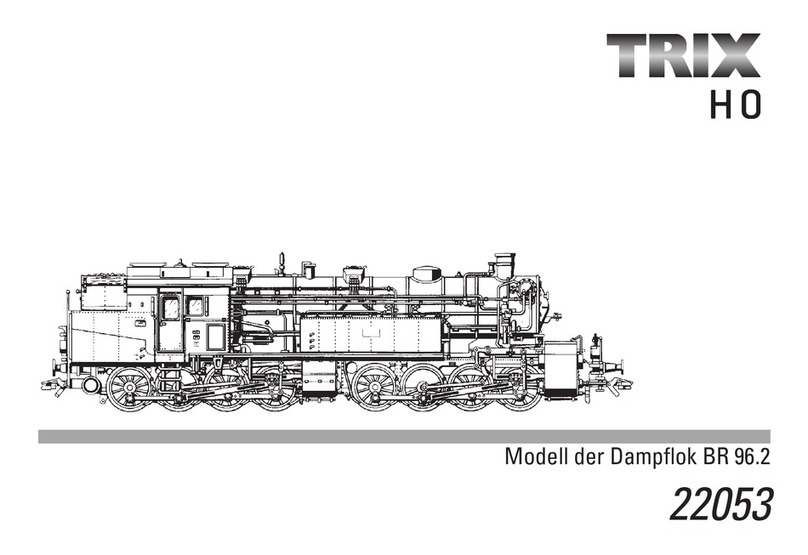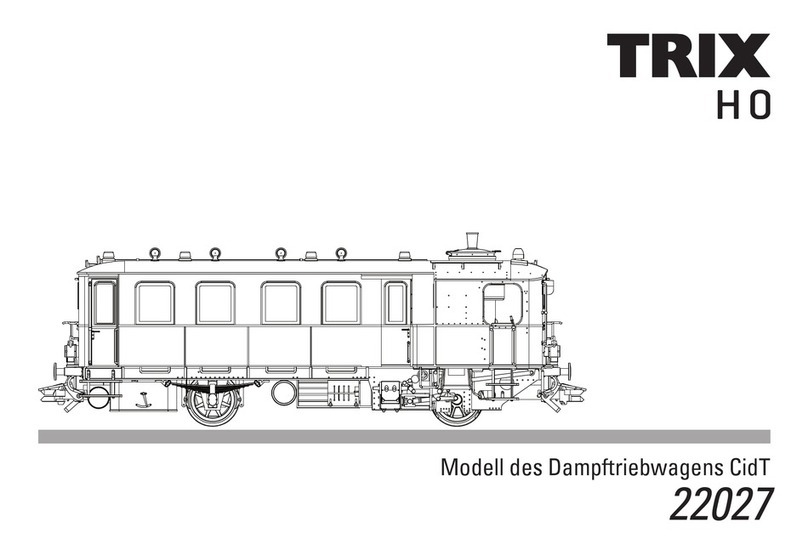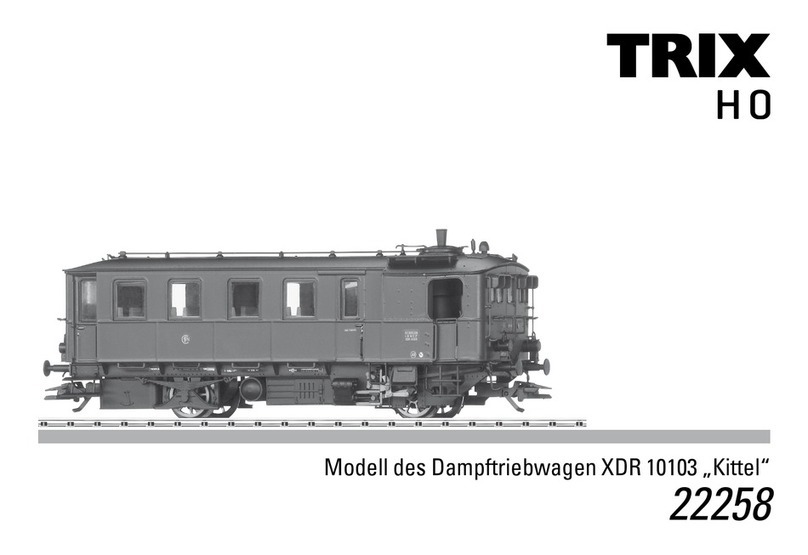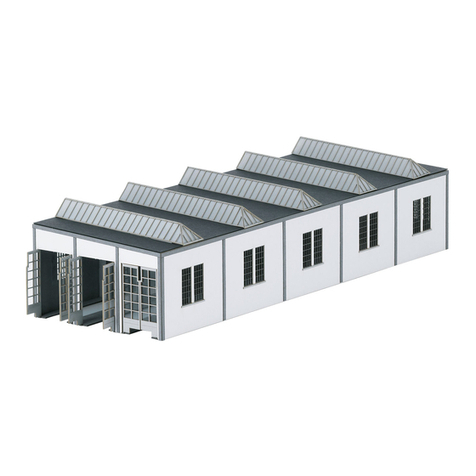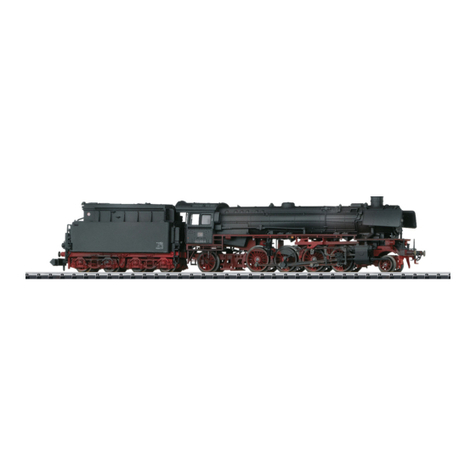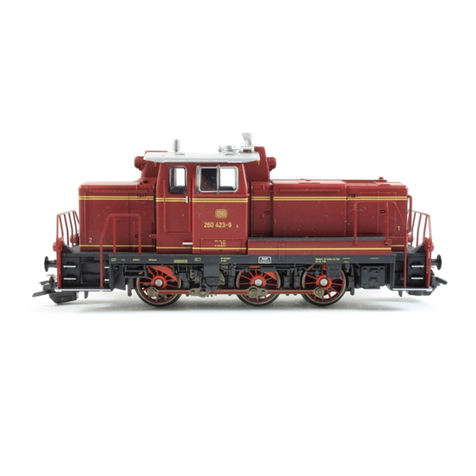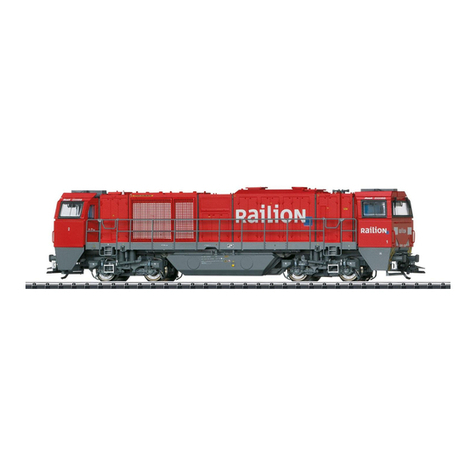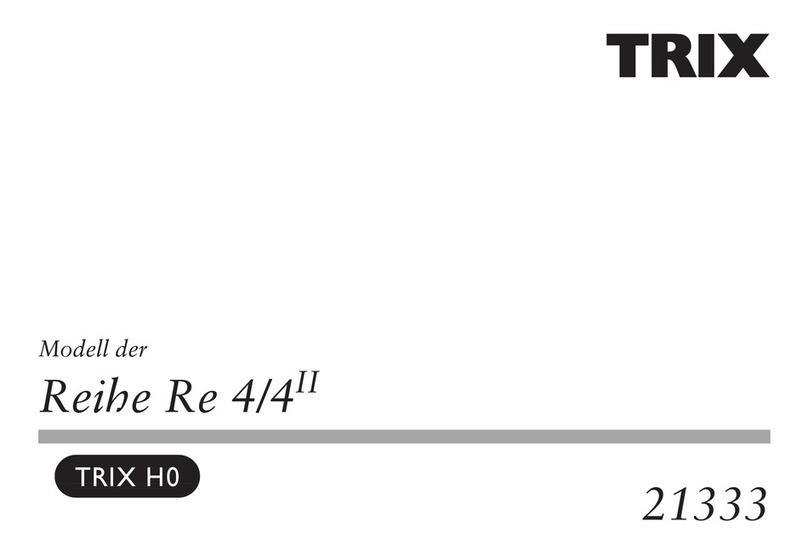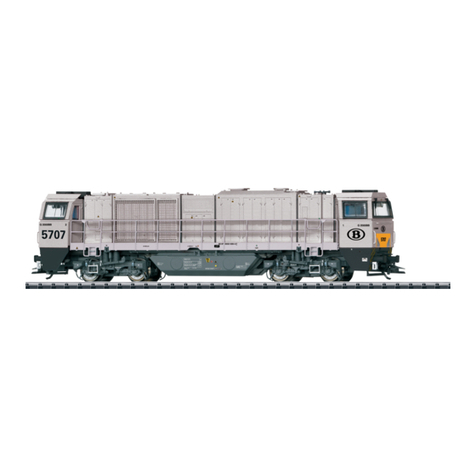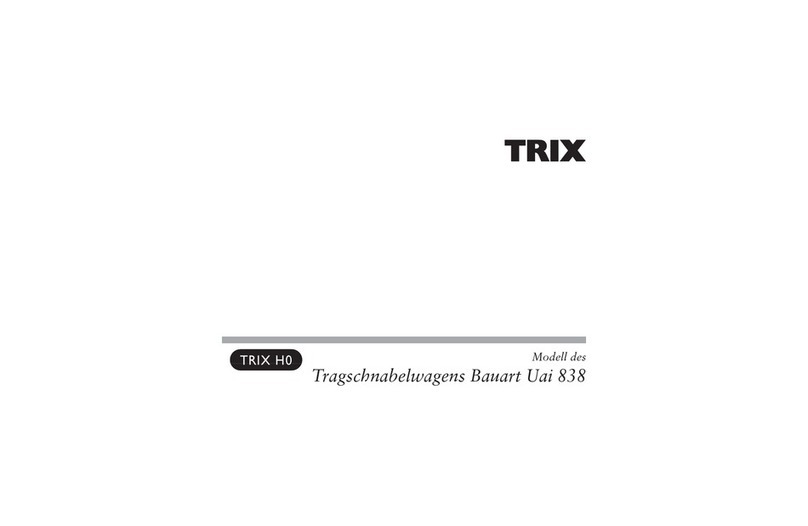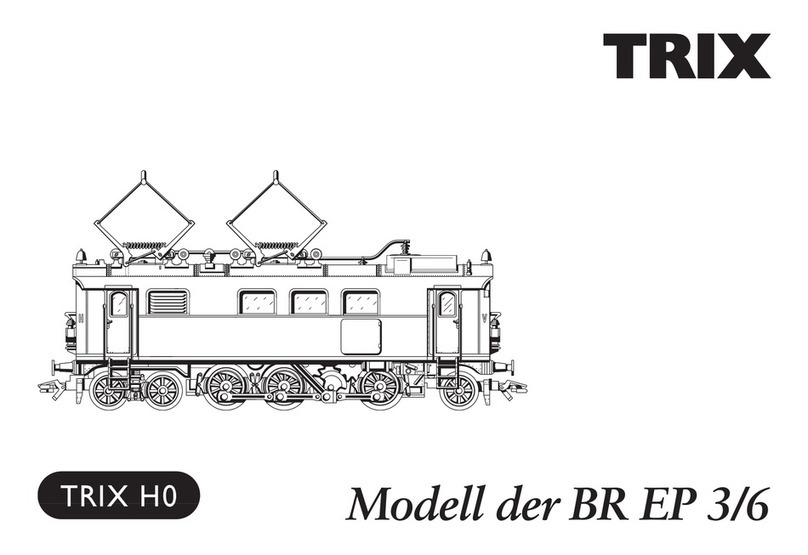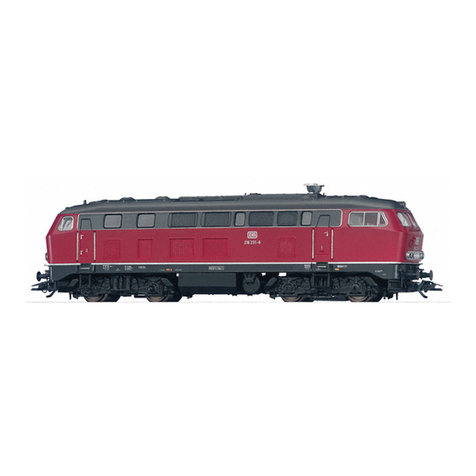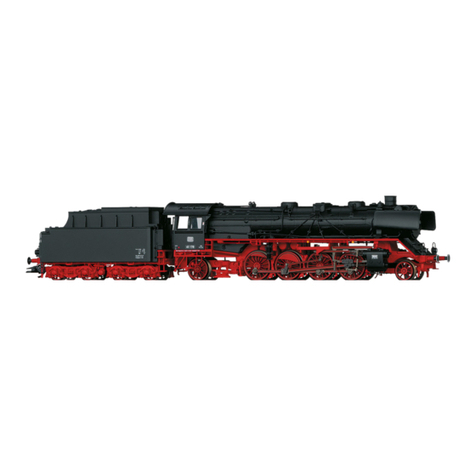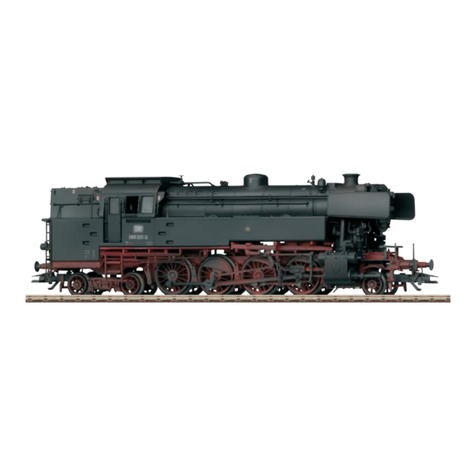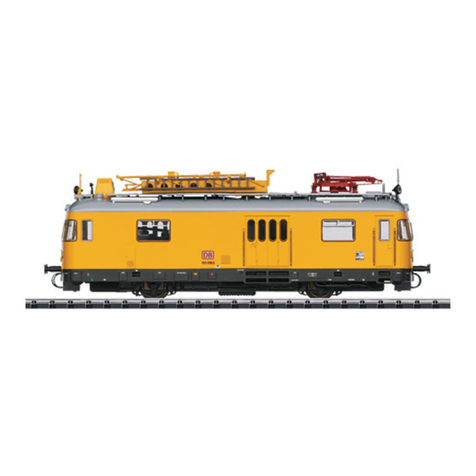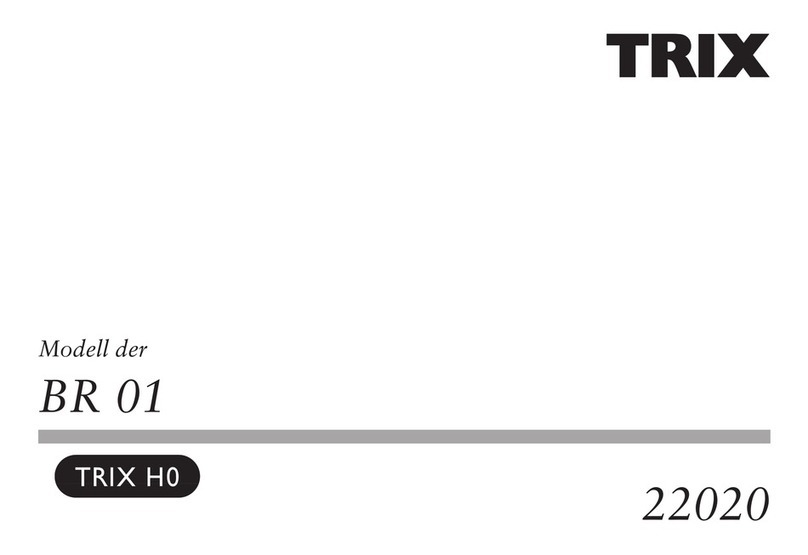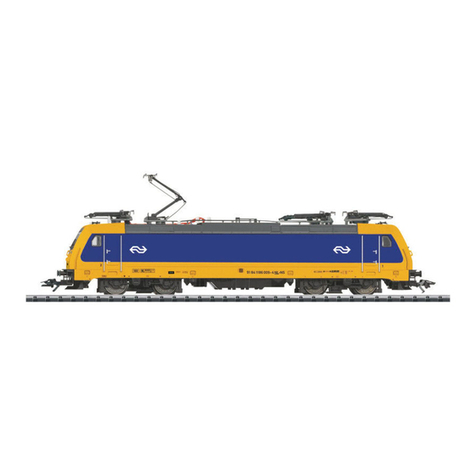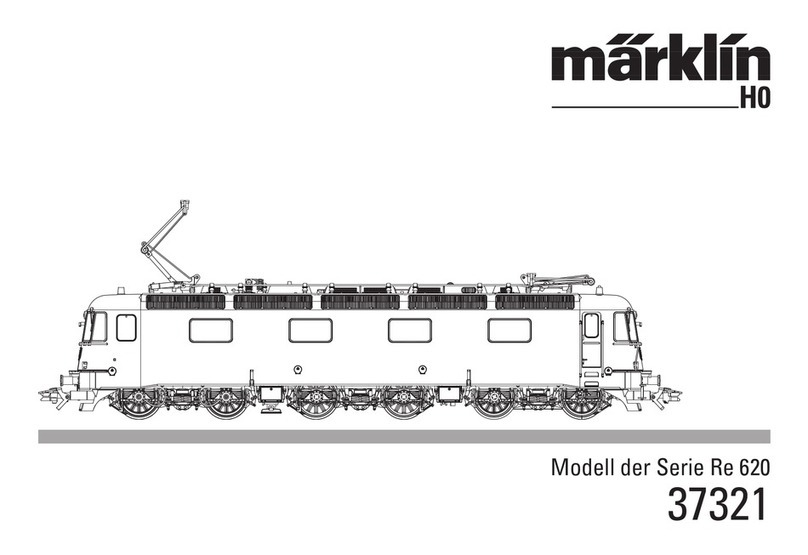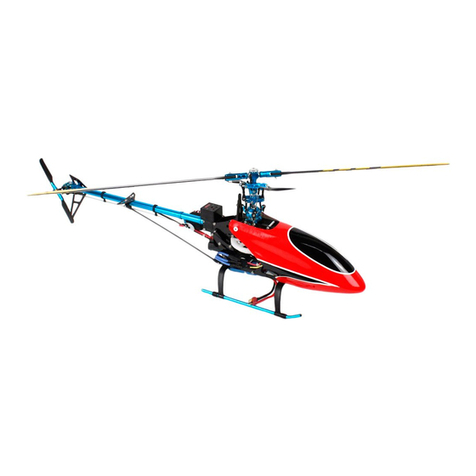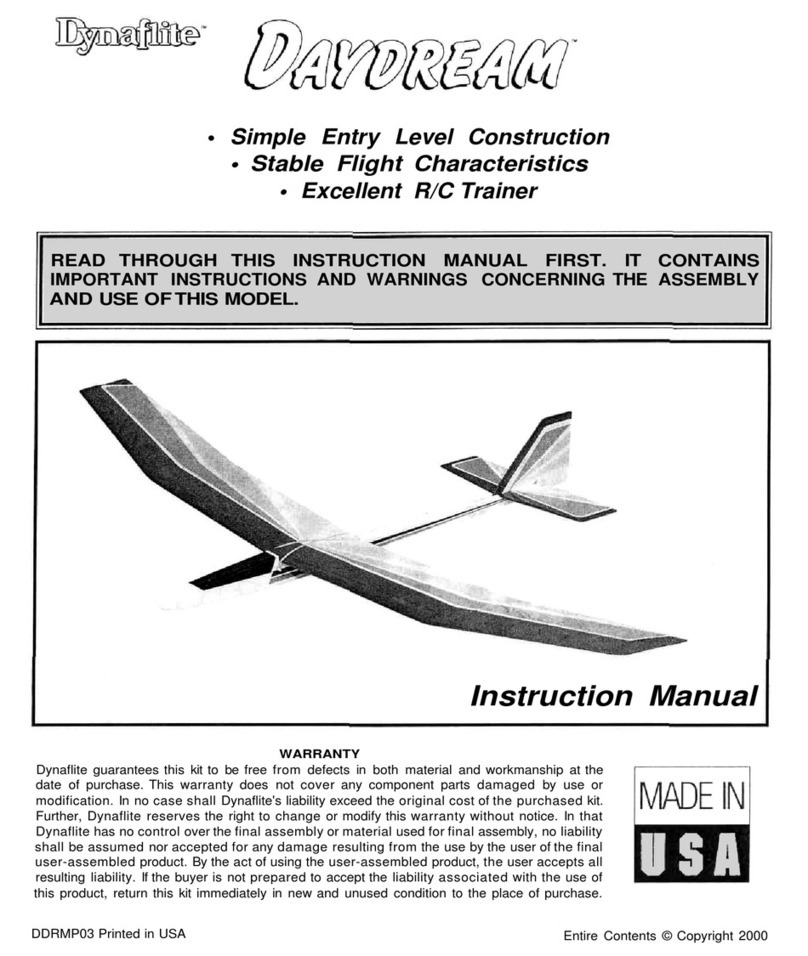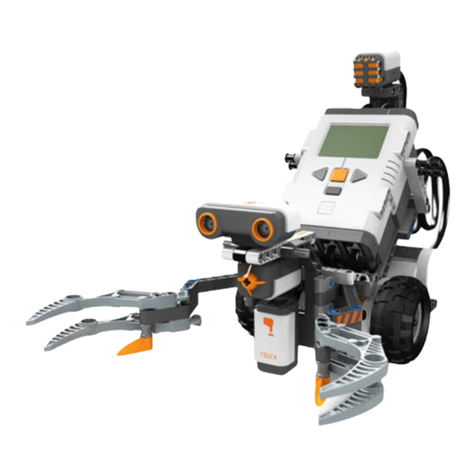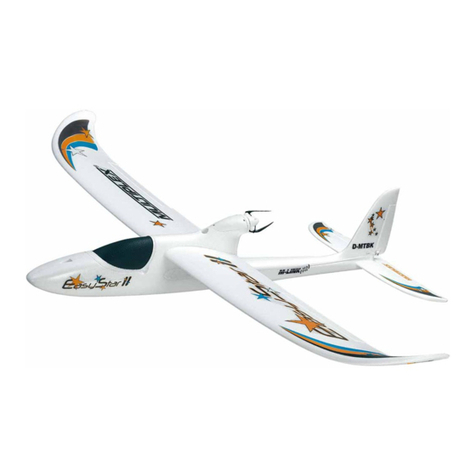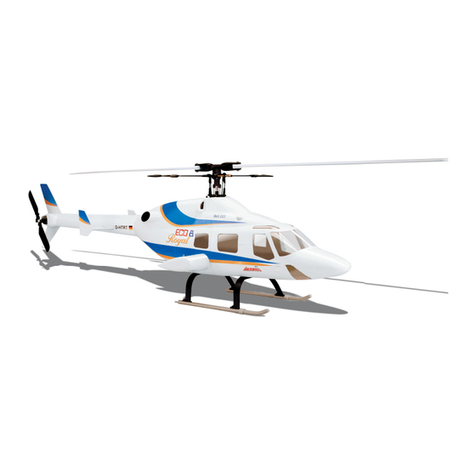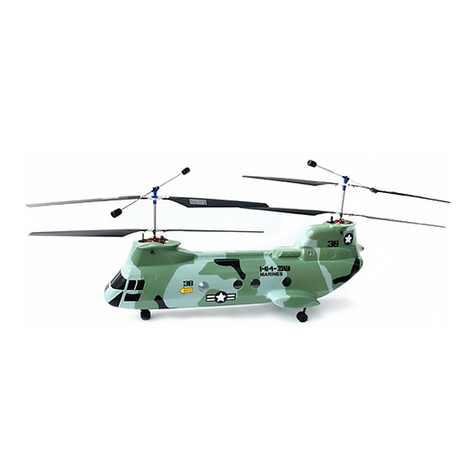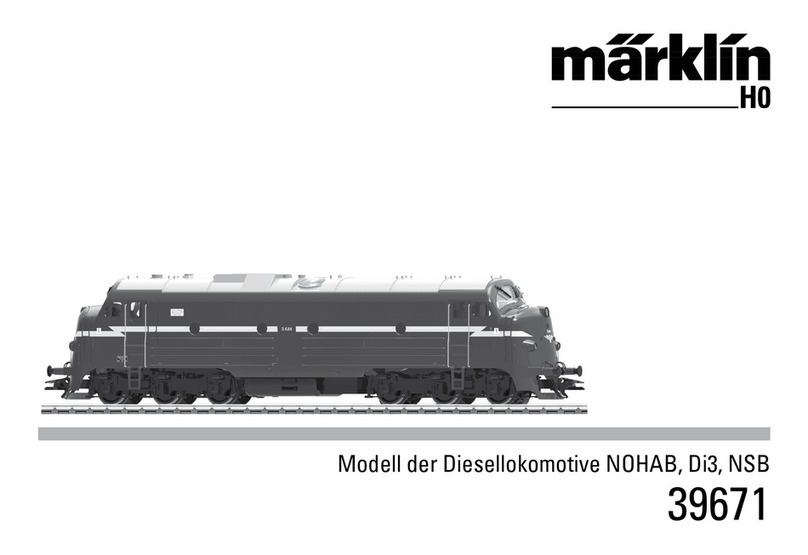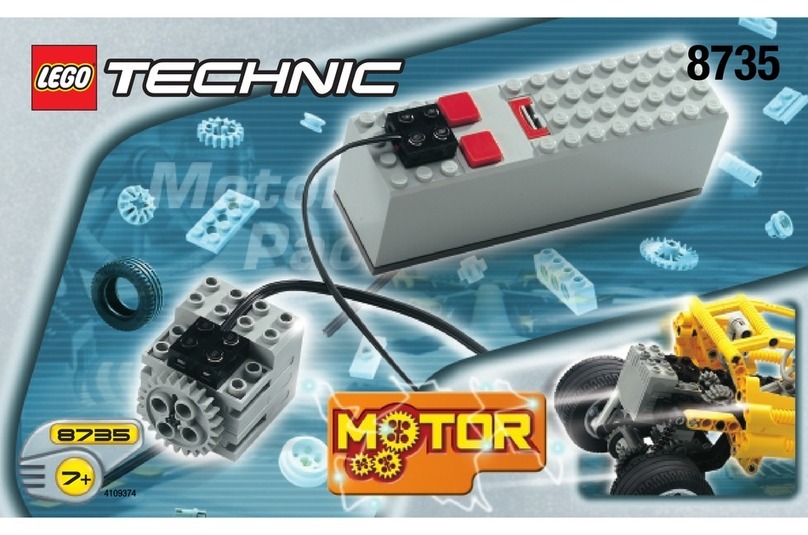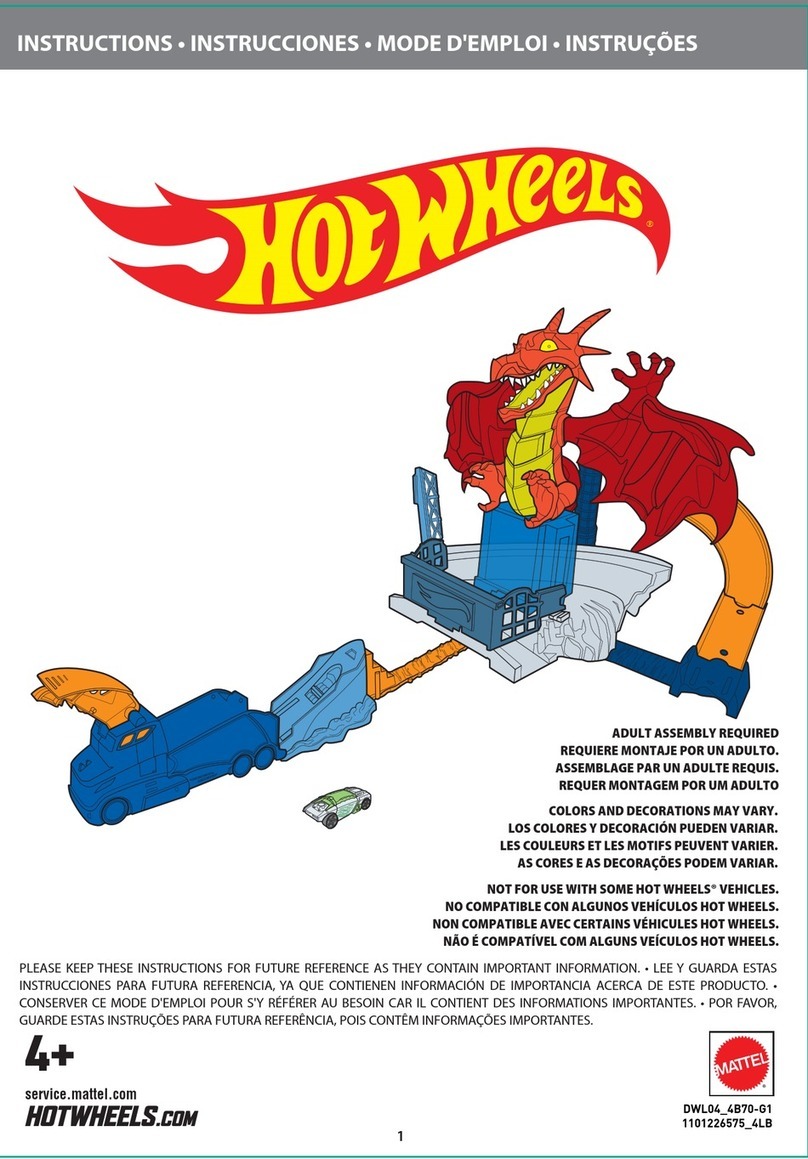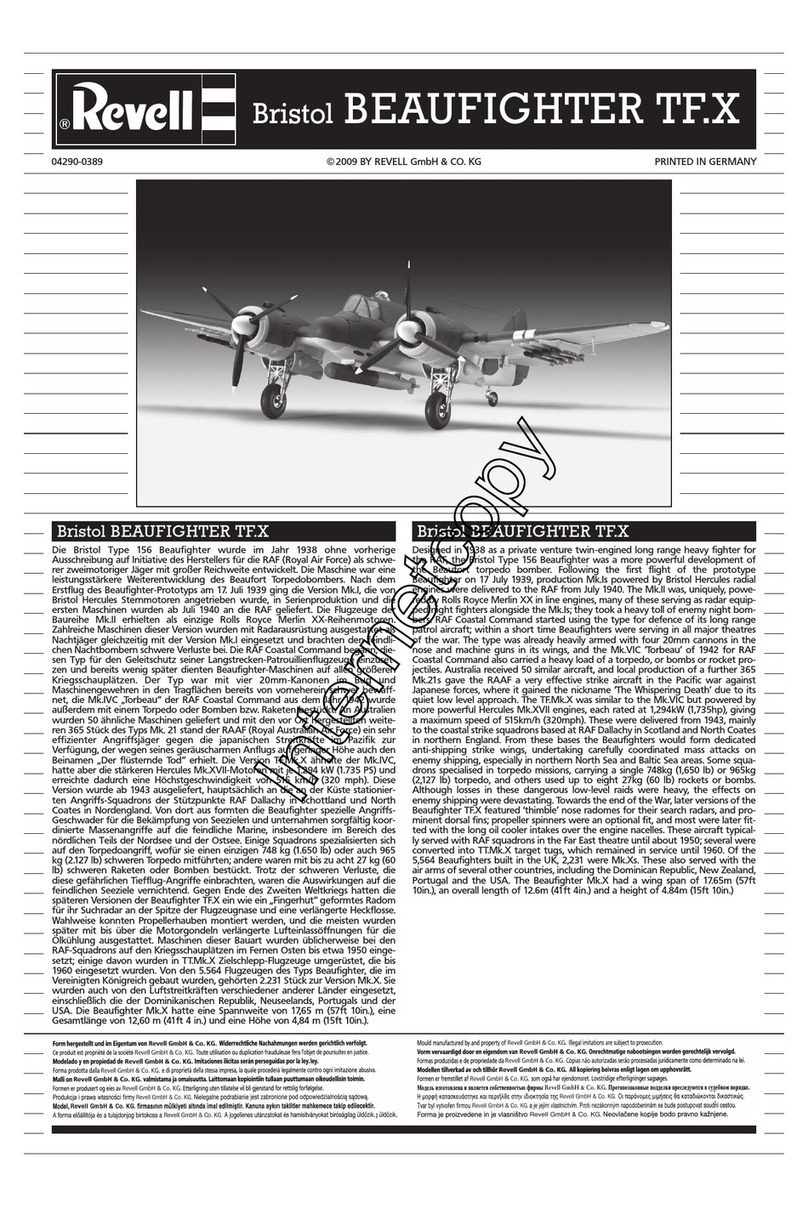
5
Informations concernant la locomotive réelle
Au regard des énormes besoins en matière de transport
durant la seconde décennie du 20e siècle, 5 Länderbahn –
dont la Prusse – se mirent d’accord pour l’acquisition com-
mune du type G 12. Cette décision résultait des problèmes
rencontrés pour la maintenance et l’utilisation de machines
non unifiées De 1917 à 1924 furent construites au total 1479
machines du type G 12 dont 1345 furent ensuite reprises par
la Deutsche Reichsbahn Gesellschaft dans la série 58. Le
modèle du club 2013 portant le numéro d’immatriculation 58
1836 était une G 12 prussienne.
Cette locomotive à vapeur à l’allure compacte pour trains
marchandises n’est certes pas aussi puissante que la BR 45
ou la BR 50, mais elle est esthétiquement très réussie et se
caractérise par une chaudière haut placée et un foyer Bel-
paire.
La G 12 (et donc la série 58) fit beaucoup d’ombre à d’autres
types et avec les locomotives unifiées des séries 43 et 44,
elle compta parmi les locomotives pour trains marchandises
les plus puissantes de la DRG. Une comparaison des perfor-
mances avec les types de locomotives sans essieux porteurs
G 10 et G8.1 fournit des valeurs convaincantes :
Dans les années 1920 et 1930, la BR 58 assuma la plus grande
partie du trafic marchandises. Elle était utilisée par presque
toutes les administrations, sauf en Allemagne du Nord. Dans
l’est de l’Allemagne, la série 58 fut en service jusqu’en 1976;
en Allemagne de l’Ouest, les dernières machines furent
réformées en 1952 en raison d’énormes excédents de loco-
motives.
Informatie van het voorbeeld
Met het oog op de hoge transportbehoefte in het tweede
decennium van de 20e eeuw, kwamen vijf Länderbahnen,
waaronder Pruisen, overeen om samen het type G 12 aan te
schaffen. Reden daarvoor waren de problemen die al de ver-
schillende machines bij het onderhoud en de bediening ople-
verden. Tussen 1917 en 1924 werden in totaal 1.479 machines
van het type G 12 gebouwd. 1.345 van deze locs werden door
de Deutsche Reichsbahn-Gesellschaft als serie 58 overgeno-
men. Het clubmodel 2013 met bedrijfsnummer 58 1836 was
een Pruisische G 12.
De gedrongen stoomloc is weliswaar geen machtige goe-
derentreinloc als de serie 45 of de serie 50, maar hij ziet er
aantrekkelijk uit en valt op door een hoge ketelpositie, de
Belpaire-buitenvuurkist en het staafframe waarop de vuur-
kist is geplaatst.
De G 12 en daarmee de serie 58 overvleugelde andere series.
Hij hoorde net als de eenheidslocs van de series 43 en 44 tot
de krachtigste goederentreinlocs van de DRG. Een vergelij-
king met de vermogens van de goederentreinloctypes G 10
en G 8.1 laat overtuigende waarden zien:
In de jaren 1920 en 1930 droeg de serie 58 de zwaarste last
van het goederenvervoer. Hij werd vrijwel overal ingezet, be-
halve in Noord-Duitsland. In het oosten van Duitsland bleef
de serie 58 tot 1976 in dienst, in West-Duitsland werden de
machines wegens een teveel aan locs in 1952 op een zijspoor
gezet.

